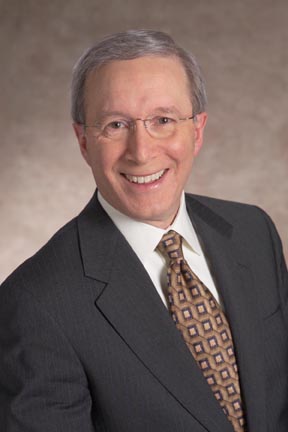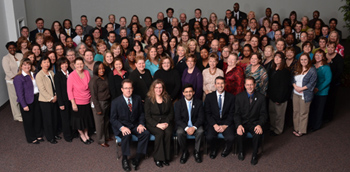Assuring the Ongoing Clinical Competence of Physicians through MOL
Granting the initial medical license has long involved a robust process with multiple assessment hurdles that must be cleared. Increasingly, however, the license renewal process has become the focus of attention as a better informed public developed greater awareness of patient safety concerns.
Much has led up to this. In 1995, the Pew Charitable Trust Health Professions Commission recommended that state boards develop continuing competency requirements for regulated health professionals. In 1999, the Institutes of Medicine asserted that the public views a medical license as a "good housekeeping seal of approval" implying close scrutiny of physician competence throughout the period of licensure. These signals mirrored earlier work dating back decades to foster continued competence of physicians. For example, the 1967 Presidential Commission on Medical Manpower called for periodic reassessment of physicians, and in 1971 the New Mexico Medical Board became the first state board to mandate continuing medical education (CME) as a condition for license renewal. The nominal recertification requirements of the 24 specialty boards of the ABMS dating to the 1970's were enhanced starting in the late 1990's with a more comprehensive Maintenance of Certification (MOC) program.
It was within this landscape that the Federation began formally addressing the continued competence of licensed physicians. In 2003, FSMB convened a Special Committee on Maintenance of Licensure (MOL) to make recommendations about the value of a possible system for the periodic assessment of the clinical competence of actively licensed physicians. The following year, the Federation's House of Delegates approved a seminal policy statement: "State medical boards have a responsibility to the public to ensure the ongoing competence of physicians seeking relicensure."
From 2004 to 2010, the FSMB actively sought input and feedback on MOL from leaders of major health care organizations, federal/state governmental agencies, international colleagues and the public. A succession of Federation Chairs continued guiding the MOL initiative — Doris Brooker (Minnesota), Lee E. Smith (West Virginia), J. William McCord (Tennessee), N. Stacy Lankford (Indiana), Regina Benjamin (Alabama), Martin Crane (Massachusetts), Freda Bush (Mississippi) and Janelle Rhyne (North Carolina) — with multiple interim reports issued between 2005and 2010.
Discussions around MOL continued in 2008-2010 with a series of advisory and work groups that moved the dialogue forward: the Impact Analysis Taskforce, the Advisory Group on the Continued Competence of Licensed Physicians; the MOL Implementation Group and a CEO Advisory Council on MOL.
In April 2010, the FSMB House of Delegates adopted a framework for MOL by which physicians would be required to demonstrate their continued clinical competence beyond initial licensure as a requirement for license renewal. The three components of MOL that all physicians would be expected to complete incorporated the core physician competencies pioneered by ACGME and the ABMS and focused on reflective self-assessment, an assessment of knowledge and skills, and performance in practice. A series of recommendations on MOL adopted by the FSMB House of Delegates that same year included a recommendation that participation in the ABMS' MOC program, or the American Osteopathic Association Bureau of Osteopathic Specialties' Osteopathic Continuous Certification (OCC) program, should represent substantial compliance with MOL requirements.
By the summer of 2011, a dozen state boards indicated interest in participating in MOL implementation pilot projects. To facilitate such work, the Federation has been meeting with several medical organizations with expertise and experience in physician assessment and research—particularly the National Board of Medical Examiners (NBME) and ABMS but also the AOA Bureau of Osteopathic Specialists and the National Board of Osteopathic Medical Examiners.
Supporting Physician Accountability through National Dialogue
 Former Federation President/CEO, James N. Thompson, recognized that state boards' limited resources meant that ensuring physician competence would require collaborative endeavor. Thus, the Federation organized a series of "Physician Accountability for Physician Competence" (PAPC) meetings beginning in 2005 as a national, multi-stakeholder forum to explore how the health care community assures the public of physicians' competence throughout their careers. More than 40 organizations, including medical regulators in the U.S. and Canada, groups representing practicing physicians, insurers, academic health care centers, major education foundations and the public, participated over time in a series of national invitational "summits" coordinated by the Federation.
Former Federation President/CEO, James N. Thompson, recognized that state boards' limited resources meant that ensuring physician competence would require collaborative endeavor. Thus, the Federation organized a series of "Physician Accountability for Physician Competence" (PAPC) meetings beginning in 2005 as a national, multi-stakeholder forum to explore how the health care community assures the public of physicians' competence throughout their careers. More than 40 organizations, including medical regulators in the U.S. and Canada, groups representing practicing physicians, insurers, academic health care centers, major education foundations and the public, participated over time in a series of national invitational "summits" coordinated by the Federation.
The wide ranging nature of the physician competency discussions complemented other collaborative initiatives and dialogue on various projects. For example, the Federation partnered with several organizations to develop a model for multi-stakeholder discussions and consensus-building in areas of common interest. The Federation's Uniform Application for Physician Licensure (UA) reflected aspects of summit discussions dealing with license portability. Interest in a portfolio tool led to successful pilot studies and early plans by the NBME and the AAMC for electronic physician portfolio within a much broader "data commons" platform.
Finally, recognizing the enduring value of dialogue among leaders in physician assessment, licensure, accreditation, credentialing and certification has led to the Federation's participation in the "Coalition for Physician Accountability" which involves organizations for all of these areas.
Comprehensive Review of the United States Medical Licensing Examination (USMLE)
With progress being made in the plans for the assurance of the ongoing clinical competence, work was also underway on the examination for medical licensure. The USMLE completed its first strategic enhancement with the transition to computer-based testing in 1999 and the inclusion of a clinical skills component for Step 2 in 2004. Since then, the Federation and NBME have undertaken a comprehensive review of the USMLE (CRU) culminating in the report and recommendations of the Committee to Evaluate the USMLE Program. Among the more critical changes underway are those orienting the USMLE toward two patient-centered decision points (one at the interface between undergraduate and graduate medical education and one at the beginning of independent medical practice.) Others include adoption of a general competencies schema consistent with national standards and strengthening the assessment of foundational medical sciences throughout the USMLE sequence.
The Future
 As the Federation enters its second century, much work remains to be done in service to the state medical and osteopathic boards that protect the American public through their oversight and regulation of medicine.
As the Federation enters its second century, much work remains to be done in service to the state medical and osteopathic boards that protect the American public through their oversight and regulation of medicine.

